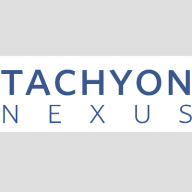

Tachyon Nexus and Cloudera Data Platform compete in the big data ecosystem. Tachyon Nexus seems to have an edge with its lower pricing and efficient customer support, while Cloudera Data Platform stands out with its comprehensive feature offerings and versatility for complex data needs.
Features: Tachyon Nexus provides high-speed data access, enhanced integration capabilities, and swift data processing and retrieval. Cloudera Data Platform offers an end-to-end big data framework, advanced analytics, and comprehensive security and governance tools, catering to complex data operations.
Ease of Deployment and Customer Service: Tachyon Nexus features a straightforward deployment process with reliable customer support, focusing on simplicity and quick setup. Cloudera Data Platform has a more complex deployment process but offers extensive support resources and detailed documentation.
Pricing and ROI: Tachyon Nexus offers a cost-effective setup with quicker ROI due to affordable pricing. Cloudera Data Platform, while more expensive, delivers greater long-term value with features designed for enterprise-level operations and strong returns for businesses with advanced data needs.
| Product | Market Share (%) |
|---|---|
| Cloudera Data Platform | 6.2% |
| Palantir Foundry | 25.2% |
| Informatica Intelligent Data Management Cloud (IDMC) | 14.1% |
| Other | 54.5% |
| Product | Market Share (%) |
|---|---|
| Tachyon Nexus | 1.1% |
| Cloudera Distribution for Hadoop | 21.9% |
| Apache Spark | 19.0% |
| Other | 58.0% |

| Company Size | Count |
|---|---|
| Small Business | 8 |
| Midsize Enterprise | 5 |
| Large Enterprise | 22 |
Cloudera Data Platform offers a powerful fusion of Hadoop technology and user-centric tools, enabling seamless scalability and open-source flexibility. It supports large-scale data operations with tools like Ranger and Cloudera Data Science Workbench, offering efficient cluster management and containerization capabilities.
Designed to support extensive data needs, Cloudera Data Platform encompasses a comprehensive Hadoop stack, which includes HDFS, Hive, and Spark. Its integration with Ambari provides user-friendliness in management and configuration. Despite its strengths in scalability and security, Cloudera Data Platform requires enhancements in multi-tenant implementation, governance, and UI, while attribute-level encryption and better HDFS namenode support are also needed. Stability, especially regarding the Hue UI, financial costs, and disaster recovery are notable challenges. Additionally, integration with cloud storage and deployment methods could be more intuitive to enhance user experience, along with more effective support and community engagement.
What are the key features?Cloudera Data Platform is implemented extensively across industries like hospitality for data science activities, including managing historical data. Its adaptability extends to operational analytics for sectors like oil & gas, finance, and healthcare, often enhanced by Hortonworks Data Platform for data ingestion and analytics tasks.
We monitor all Data Management Platforms (DMP) reviews to prevent fraudulent reviews and keep review quality high. We do not post reviews by company employees or direct competitors. We validate each review for authenticity via cross-reference with LinkedIn, and personal follow-up with the reviewer when necessary.